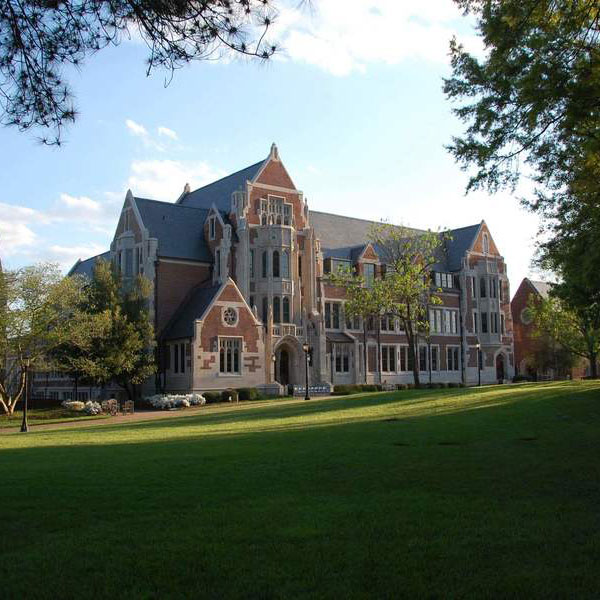Agnes Scott College sees water conservation and water quality as topics that are literally ‘close to home’. The college sits squarely on two watersheds - the Ocmulgee and the Chattahoochee. The Eastern Subcontinental Divide runs parallel with the college’s oldest building, Main Hall. The water that falls on the north side of the building’s roof flows to the Gulf of Mexico and the water that falls on the south side of the building's roof flows to the Atlantic Ocean. A ground marker can be found in the brick sidewalk on the northeast side of Main Hall. Make sure to check it out next time you are over there! Here’s an interactive map of where the Eastern Subcontinental Divide runs through the state of Georgia.
The first steps toward a water action plan occurred on Community Day in 2008 with a water audit. A group of staff and faculty volunteers began collecting data from all non-residential buildings on campus. That fall students in the First-Year Seminar entitled “So You Want To Save the Planet” worked on a class project focusing on understanding the water use on campus and collecting data for the audit. They found that Agnes Scott decreased the total amount of water by 14% from academic years 2006 to 2007, much of which can be attributed to the college’s aggressive move to irrigate solely from the retention pond.
This broad-based plan for water sustainability at Agnes Scott extends over three major focus areas: potable water, wastewater and bottled water. The water plan is structured to be approached in phases through retrofitting and renovations, behavioral change, and innovative projects. It is also structured with the intent of Agnes Scott being a responsible member and preserving the community watershed. Ultimately, the purpose of this focus is to reduce ASC’s water footprint in the Chattahoochee River and any other watersheds that may be affected indirectly.
Points of Pride
- Agnes Scott received the River Sustainability Award from the Chattahoochee Riverkeeper for demonstrating exceptional commitment to protecting the Chattahoochee River. This award was received at the Chattahoochee Riverkeeper 24th Annual Patron Dinner in 2018.
- Since beginning water conservation efforts in 2007, Agnes Scott has reduced potable water consumption by more than 15%. We anticipate exceeding our reduction goal of 20% by 2020.
- Agnes Scott committed to using no potable water for campus landscaping even before the sustainability movement on campus. We capture stormwater from the entire campus in a retention pond that is used for landscape watering, except in cases of extreme drought.
- Using the college’s nationally recognized Green Revolving Fund, we have replaced all campus toilets, showers, and sinks with low flow fixtures in the past five years. This investment of more than $150,000 will be returned to the Green Revolving Fund by transferring funds from the college’s utility budget until the projects have been paid back. This means that $150,000 will be invested in additional water and energy efficiency projects.
- Agnes Scott recognizes the connection between reducing our energy use and reducing water required by energy production for metro Atlanta. Therefore, our efforts to reduce energy – guided by the college’s commitment to erase our carbon footprint by 2037 – are also critical to water quality and quantity issues. As of 2017 the college has decreased the natural gas and electricity portion of our carbon footprint by 30%. We anticipate meeting a 50% carbon emissions reduction goal by 2022.
- The Green Revolving Fund has been critical to these energy reduction efforts, with almost $2 million of individual donor and foundation funds, along with utility savings, being invested in energy conservation projects from high-efficient lighting retrofits to HVAC equipment replacement. These projects have resulted in more than 6% overall energy use reduction.
- Perhaps most notably, Agnes Scott’s trustees and staff committed to the highest efficiency HVAC choice available – geothermal – for two major renovation projects. Now 10% of the college’s 1 million square feet of usable space is heated and cooled with very little use of conventional electricity, no natural gas, and a decrease in water use for cooling estimated to be around 500,000 gallons per year for each building.
